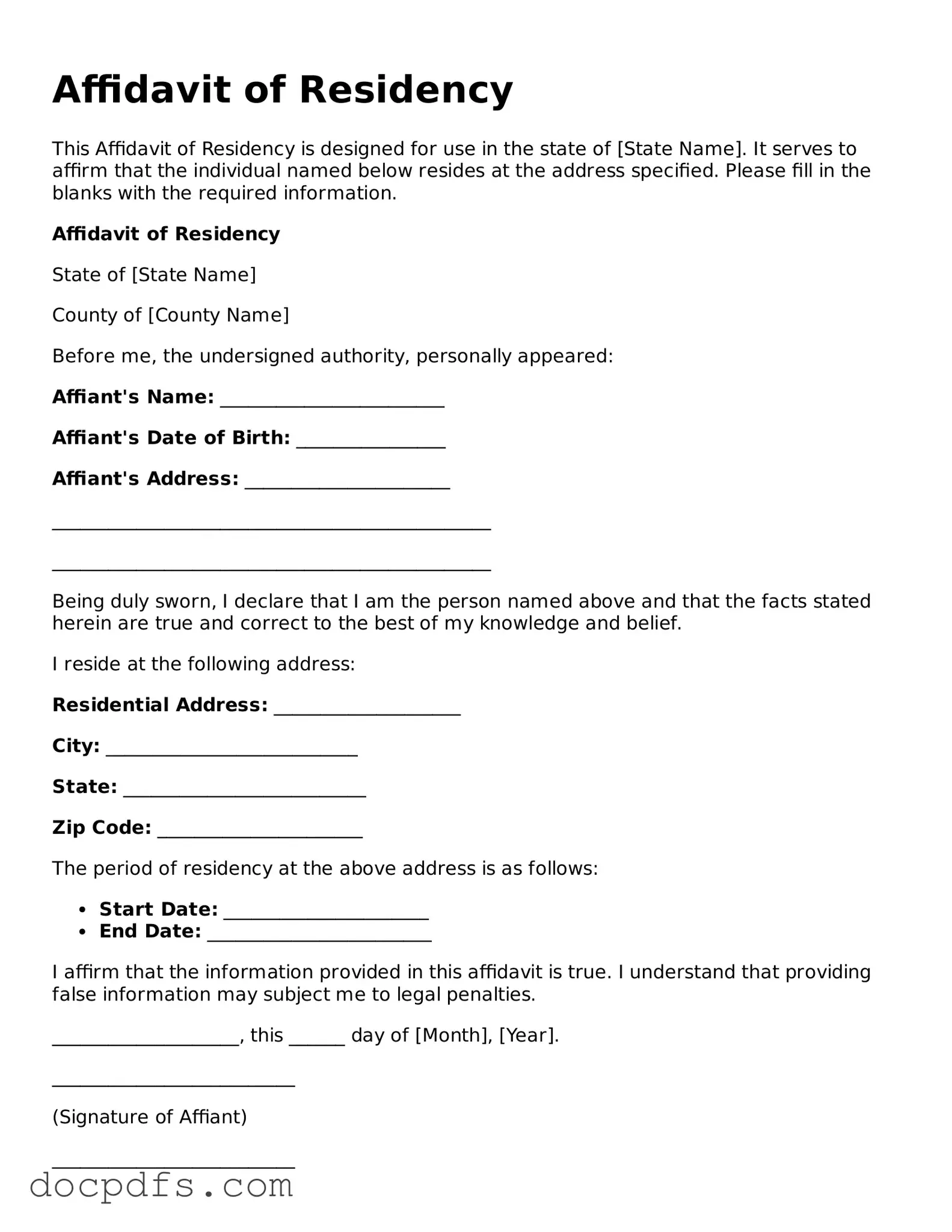What is an Affidavit of Residency?
An Affidavit of Residency is a legal document used to confirm a person's residence at a particular address. It is often required for various purposes, such as enrolling children in school, obtaining certain government benefits, or verifying identity for legal matters. By signing this document, an individual swears that the information provided is true and accurate.
Who needs to complete an Affidavit of Residency?
Anyone who needs to verify their residence may be required to complete an Affidavit of Residency. This can include:
-
Parents enrolling their children in school
-
Individuals applying for government assistance
-
People involved in legal proceedings that require proof of residence
The Affidavit of Residency usually includes the following information:
-
The full name of the person completing the affidavit
-
The address where the individual resides
-
The duration of residence at that address
-
A statement affirming the truthfulness of the information
-
The date and signature of the individual completing the affidavit
You can typically obtain an Affidavit of Residency form from various sources, including:
-
Your local school district or educational institution
-
Government offices that handle public assistance
-
Online legal document services
Be sure to check if there is a specific format required by the organization requesting the affidavit.
Is there a fee associated with completing an Affidavit of Residency?
Generally, there is no fee for completing an Affidavit of Residency itself. However, if you need to have the affidavit notarized, which is often required, there may be a small fee for that service. Notaries are available at banks, law offices, and other public locations.
Do I need a witness or notary for the Affidavit of Residency?
In many cases, an Affidavit of Residency must be notarized to be considered valid. A notary public serves as an impartial witness, confirming that you signed the document willingly and that your identity is verified. Some organizations may accept an affidavit without notarization, so it’s essential to check the specific requirements of the entity requesting the document.
Providing false information in an Affidavit of Residency can have serious consequences. It may lead to legal penalties, including fines or even criminal charges, depending on the severity of the misrepresentation. Additionally, any benefits or services obtained based on false information could be revoked.
How should I submit the completed Affidavit of Residency?
Once you have completed and signed the Affidavit of Residency, you should submit it according to the instructions provided by the requesting organization. This may involve mailing a physical copy, delivering it in person, or submitting it electronically. Always keep a copy for your records before submitting the original document.
